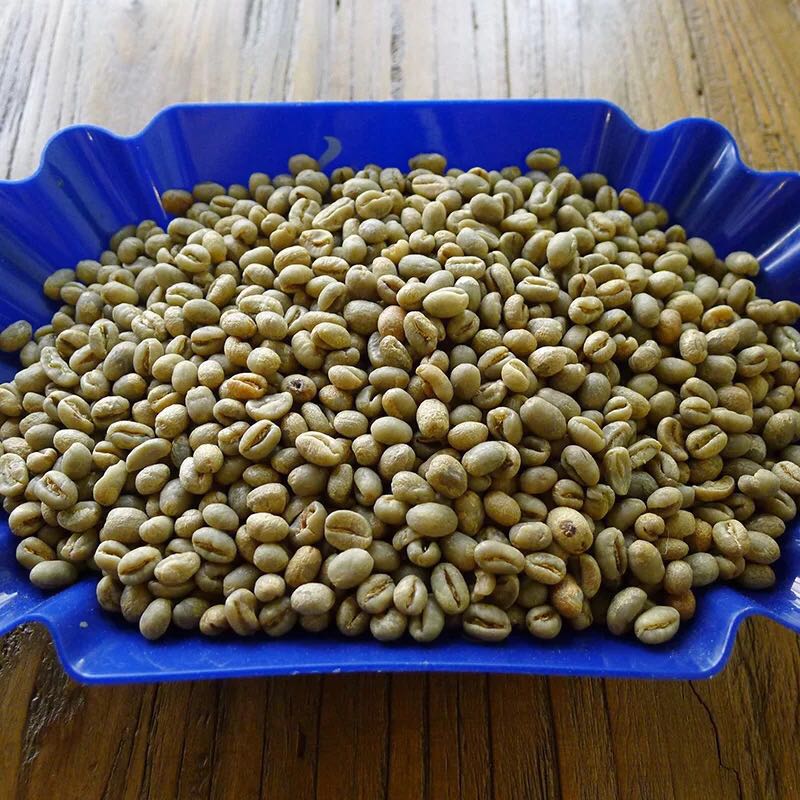Introduction to the practice of Wei Zexi coffee beans and fine coffee beans
Consumers are getting used to this, so when steamships shorten the journey time, coffee producers find that consumers still want beans of the same color and taste that are affected by long trips. In order to recreate the flavor of the original coffee, the "monsoon" process was used. In May and June every year, monsoons occur in southwestern India, so during the monsoon season, people spread coffee in special rooms open around them, about 12 to 20 centimeters thick, and leave them there for five days. Rake the coffee beans again and again so that all the coffee beans are exposed to the extremely humid air at that time Then put the curry beans loosely in bags and pile them up so that the monsoon can blow through the bags. The bags are reloaded and piled once a week for seven weeks until the coffee beans change color and taste. Finally, the coffee beans are hand-picked, those that are not affected by the "monsoon" are removed, and then bagged for export. October to February is a good time to make "monsoon" coffee.
In addition to Karnataka, good coffee is grown in Tellichery and Maral in the southwestern state of Kerala, as well as in Nilgiris in the southeastern state of Tamil Nadu, formerly known as Madras.
The best Indian coffee is also classified as Arabian plantation coffee, with the best grades A, B, C and T. The "monsoon" coffee is divided into high-quality Malabar (Monsooned MalabarAA grade coffee) and "monsoon" Basan Nicoli (Monsooned Basanically) coffee. India also produces some bean-shaped berry coffee.
At present, the problems facing the coffee industry are serious bureaucracy, excessive taxes and lack of investment. Currently, the Coffee Council of India (Indian Cffee Board) controls the entire coffee industry, buying coffee and then selling it. Coffee is sold at mass auctions. These coffees are mixed together to reach a certain trade volume, which eliminates the differences between manors and regions, so that many high-quality coffee producers lack sufficient motivation to produce unique and high-quality coffee beans. The government tried to solve this problem in 1992, and through efforts, the famous Valley Nuggets coffee was obtained through seeds from A-grade coffee plantations in several high-quality coffee production areas. People hope this will encourage other coffee growers, because most of them are really eager to put their products into the gourmet coffee market.

Important Notice :
前街咖啡 FrontStreet Coffee has moved to new addredd:
FrontStreet Coffee Address: 315,Donghua East Road,GuangZhou
Tel:020 38364473
- Prev

Water Quality Index Affects Coffee Flavor
Even if it is the same TDS water, the soluble solids contained in it will not be the same, so it is possible to be the same in flavor? The problem may come back to the minerals themselves. Because there are many metal cations and anions in water, the common salty taste is mainly sodium ion. According to the periodic table, if the alkali metal ions similar to it can pass through the separation,
- Next

Coffee bean import declaration Shanghai coffee bean import declaration
Tarrazu in Costa Rica is one of the major coffee producing areas in the world. The coffee produced is light and pure in flavor and pleasant in aroma. Costa Rica, with its fertile volcanic soil and good drainage, is the first country in Central America to grow coffee and bananas for commercial value. Coffee and bananas are the country's main exports. In 1729, coffee was introduced from Cuba to Goth.
Related
- Does Rose Summer choose Blue, Green or Red? Detailed explanation of Rose Summer Coffee plots and Classification in Panamanian Jade Manor
- What is the difference between the origin, producing area, processing plant, cooperative and manor of coffee beans?
- How fine does the espresso powder fit? how to grind the espresso?
- Sca coffee roasting degree color card coffee roasting degree 8 roasting color values what do you mean?
- The practice of lattes: how to make lattes at home
- Introduction to Indonesian Fine Coffee beans-- Java Coffee producing area of Indonesian Arabica Coffee
- How much will the flavor of light and medium roasted rose summer be expressed? What baking level is rose summer suitable for?
- Introduction to the characteristics of washing, sun-drying or wet-planing coffee commonly used in Mantenin, Indonesia
- Price characteristics of Arabica Coffee Bean Starbucks introduction to Manning Coffee Bean Taste producing area Variety Manor
- What is the authentic Yega flavor? What are the flavor characteristics of the really excellent Yejasuffi coffee beans?

